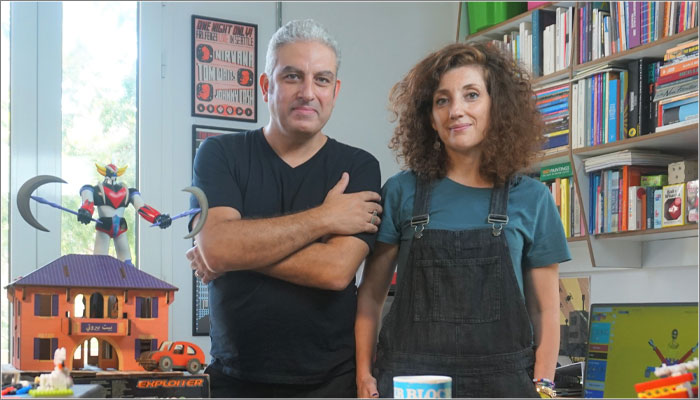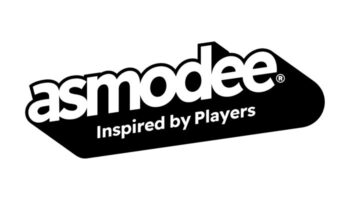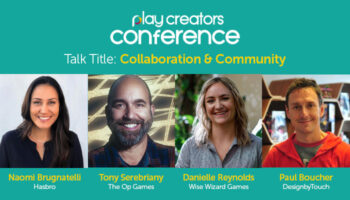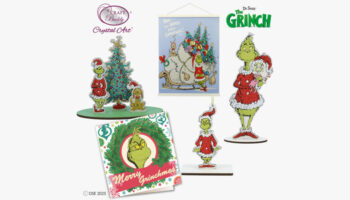MakerBrane’s Ayssar Arida and Sabine de Maussion on how the platform is curating a global community of creators

MakerBrane is an online platform that lets anyone design, build, and trade their own toy worlds.
We caught up with MakerBrane founders Ayssar Arida and Sabine de Maussion to learn more about how toy firms and the inventor community can benefit from engaging with the platform.

Hi Ayssar; first up, for those who may not know, what is MakerBrane?
MakerBrane is a platform for toy makers and fans to discover, design, play, and even learn, with toys in digital 3D. We want it to be a place where toy fans engage with brands or create their own designs; an online toy experience space if you will.
Where did the idea for MakerBrane come from?
It started a couple of years ago, when we noticed that our two girls were playing with exactly the same toys as everyone else, in New York, Paris, London, Beirut or Beijing.
Whenever their relatives bought them a gift, it was as if there were only a handful of brands to choose from. It felt as if a handful of executives somewhere decided what every kid in the world must play with!
So we started MakerBrane with a mission: to bring back choice and diversity to the toy market.
Initially we thought we’d launch our own customisable toy products, so that anyone could use them as a basis to create something new. We had some success, but scaling in the US in the middle of a trade war was very challenging as we were tooling in China and manufacturing in Mexico.
We quickly understood the problem we were hoping to solve did not come from a lack of products in the market; the problem was really a problem of visibility, of discovery.
So how is MakerBrane looking to solve this problem?
We like to say we’re giving toy makers digital superpowers!
It’s incredibly hard for smaller toy makers to compete with the largest entertainment companies like LEGO or Disney who have billions of dollars to spend on omni-channel experiences. They have movies, apps, games, story lines, and their own experience stores. And of course, they get all the best shelf space in the shops.
Before Toys R Us disappeared, it had enough space for all types of products. The kids could wander around and discover your brand if you were lucky. Now the kids are watching other kids play on YouTube. Their parents are on Amazon.com overwhelmed with images that all look the same, so they end up either buying the cheap knock-off or they give up on toys and buy themselves a new gadget.
We figured instead of launching yet another toy product, we could help everyone to compete by providing some of the tech the big boys have – at a fraction of the usual cost, time and hassle.
By making toy creation tools easy to use and making them public, more ideas and more diversity will emerge. There are amazing ideas out there!
So you’re building a worldwide community of creators, spanning all ages – can professional toy designers join?
Well we love what LEGO Ideas has done for the AFOL community – and for The LEGO Group itself – and want to replicate some of that across the industry. MakerBrane has two aspects: the display and discovery, and then there’s the creation tools.
You could use MakerBrane as an interactive shareable 3D showcase. You get feedback from the community, and get noticed by our partners. With design competitions coming up, it’s also a great way to build your portfolio and eventually monetise it.
Most professional designers have their own favourite 3D modelling tools, but MakerBrane’s 3D builder specialises in toy design, specifically using existing modular products. We are gradually bringing more than 10,000 parts online, and you can add your own original parts to the library to prototype with.
We’re particularly excited about our upcoming Building Instructions Generator – the “BIG” in homage to the movie – which shaves off weeks of work with the click of a button.
Can toy companies connect with this wider creative network on MakerBrane?
Absolutely, that’s a core value proposition. Thanks to digitisation, they’re putting their products in the hands of more people everywhere. It’s not an accident schools and after-school camps have been using Makerbrane to teach creativity; so even kids are starting to identify the brands that are on the platform as creative and innovative.
Another demographic that’s been very active on MakerBrane – and that we want to engage more with – is kidults and designers. For example, toy companies can launch idea competitions on Makerbrane and eventually make a deal with the creators to license their ideas.
You’ve mentioned MakerBrane is being used as a tool for fuelling creativity, but how do you and the wider MakerBrane team fuel your own creativity?
We talk a lot, we read and share a lot. Our favourite current theme is figuring out what it means to play with toys digitally. Lately we’ve been looking more closely at what indie game designers have been doing and it can be mind-blowingly clever and inventive.
We come from the worlds of architecture, design, and art curation. So we’ve been lucky to be surrounded by creative types most of our careers. But since launching MakerBrane and getting to know the toy community, we’ve had the best discussions. It’s sometimes frustrating to see how pedestrian the mainstream toy market could be in comparison.
If anyone wants to reach out to learn more about what you guys are doing, how can they reach you?
We’re on email at [email protected], at Twitter as @makerbrane or via the contact form on the platform at http://makerbrane.com. We’re in perpetual beta and always listening to feedback, feature requests and collaboration ideas from the toy and creative community!
—-
To stay in the loop with the latest news, interviews and features from the world of toy and game design, sign up to our weekly newsletter here
























